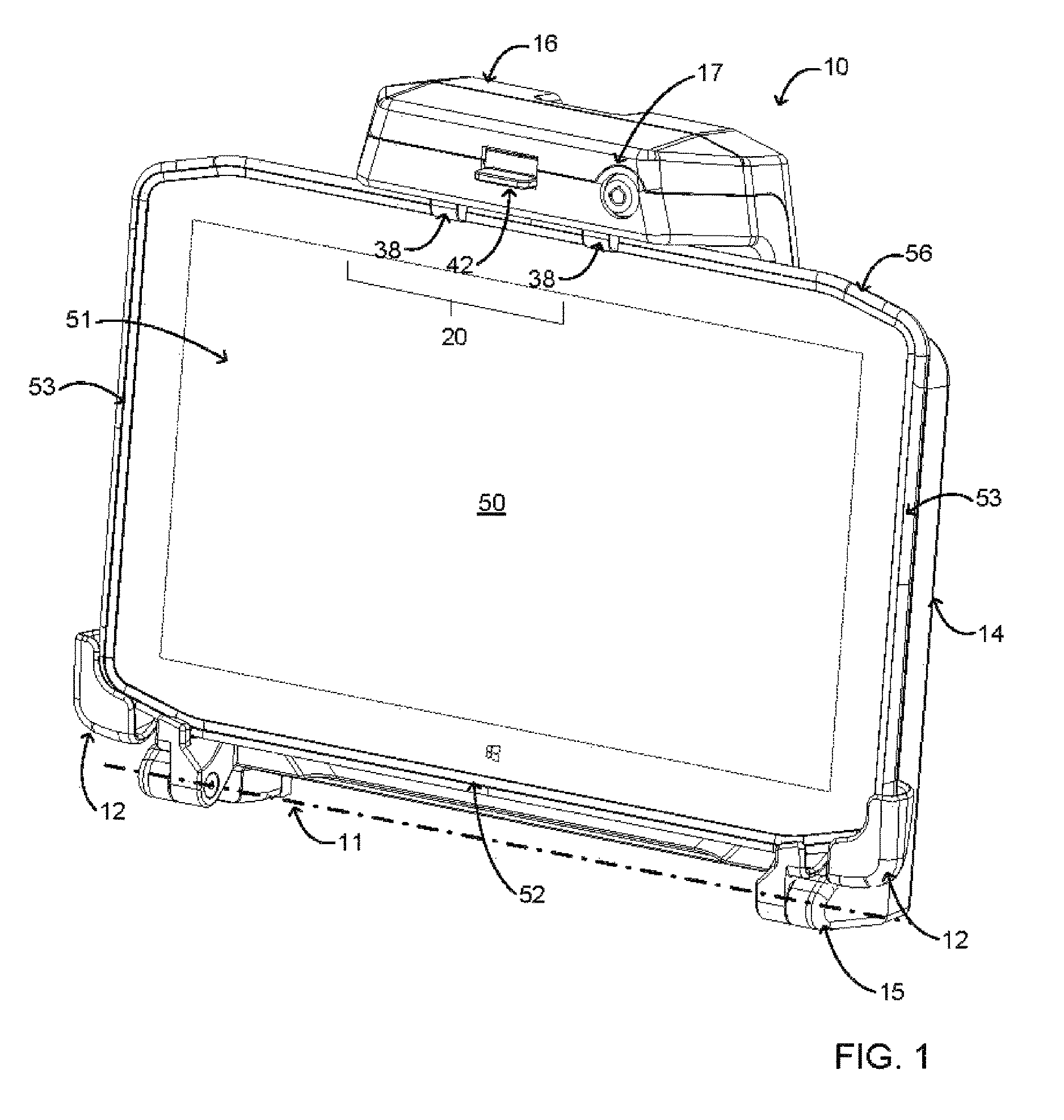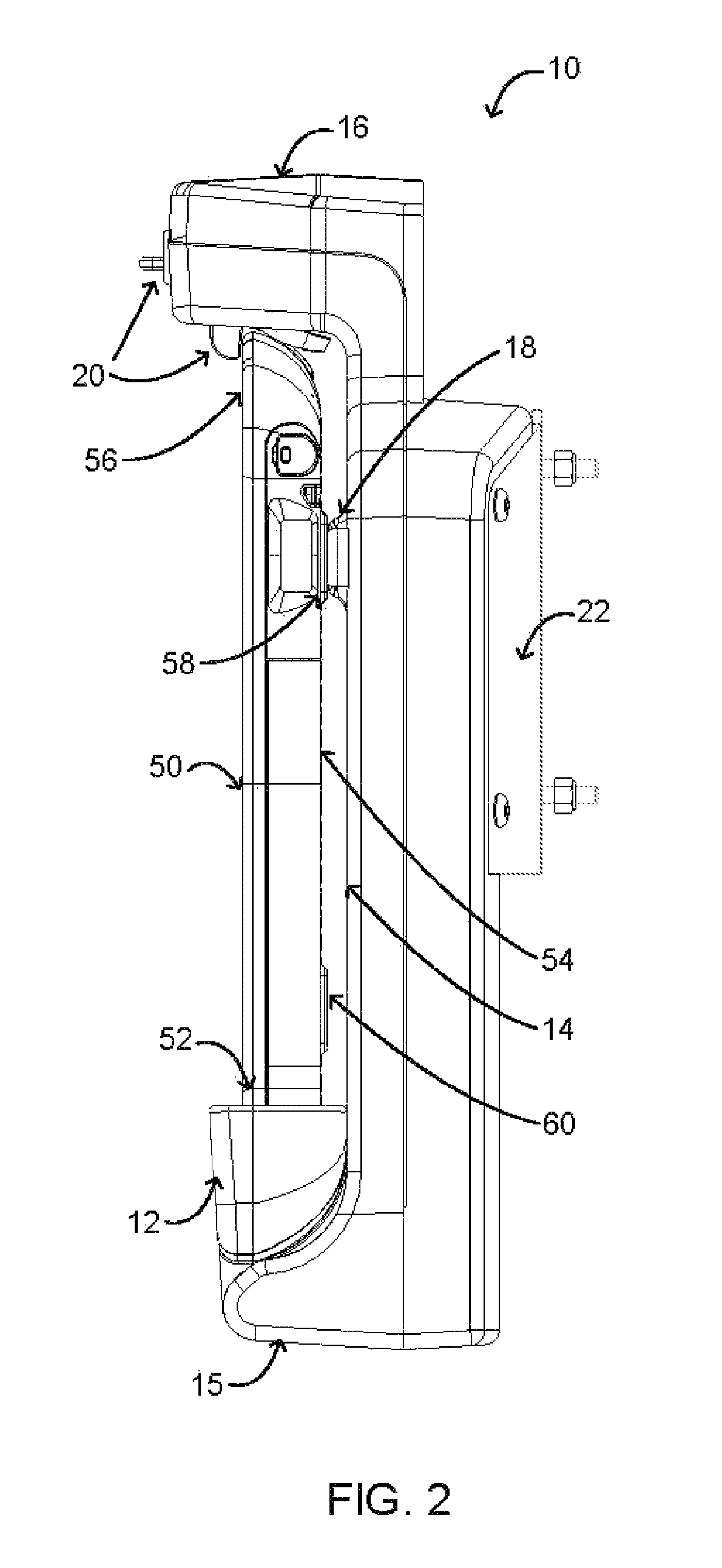Docking station with improved latching mechanism
a latching mechanism and docking station technology, applied in the field of docking stations with cam operated latches, can solve the problems of unfavorable comparison to desktop computers in some respects, portability of portable computers without keyboards, mouses, printers, etc., and achieve the effect of reducing friction
- Summary
- Abstract
- Description
- Claims
- Application Information
AI Technical Summary
Benefits of technology
Problems solved by technology
Method used
Image
Examples
Embodiment Construction
[0028]FIGS. 1-9 illustrate one embodiment of a docking station with an improved latching mechanism for securing a portable device. The latching mechanism described herein represents a significant improvement over conventional latching mechanisms by avoiding the high insertion forces typically needed to dock the portable device, reducing friction between the portable device and the latching mechanism, and reducing or eliminating marring of the cosmetic surfaces of the portable device. The latching mechanism described herein also tolerates variations in the size, shape and surface texture of different portable devices, or portable devices used with or without various protective covers. Although the portable device illustrated in FIGS. 1-9 is a portable computer (specifically, a tablet PC), a docking station with the improved latching mechanism may be configured for securely retaining substantially any portable device that can be docked. Examples of such portable devices may include, b...
PUM
 Login to View More
Login to View More Abstract
Description
Claims
Application Information
 Login to View More
Login to View More - R&D
- Intellectual Property
- Life Sciences
- Materials
- Tech Scout
- Unparalleled Data Quality
- Higher Quality Content
- 60% Fewer Hallucinations
Browse by: Latest US Patents, China's latest patents, Technical Efficacy Thesaurus, Application Domain, Technology Topic, Popular Technical Reports.
© 2025 PatSnap. All rights reserved.Legal|Privacy policy|Modern Slavery Act Transparency Statement|Sitemap|About US| Contact US: help@patsnap.com



